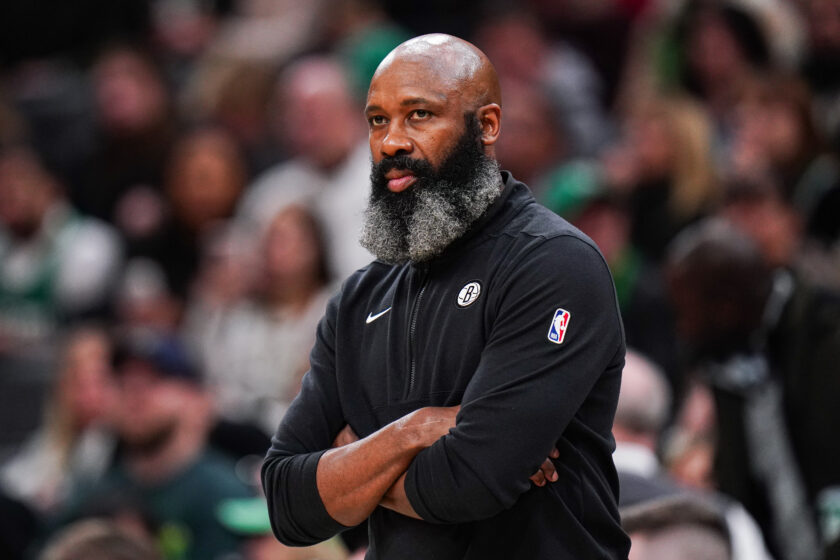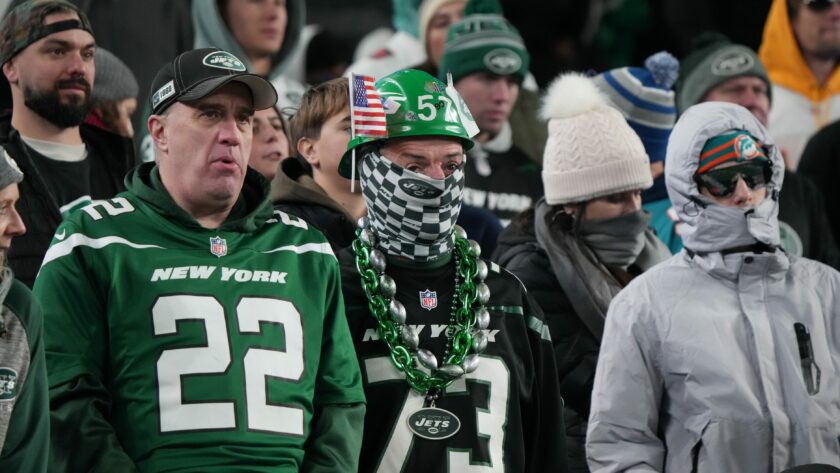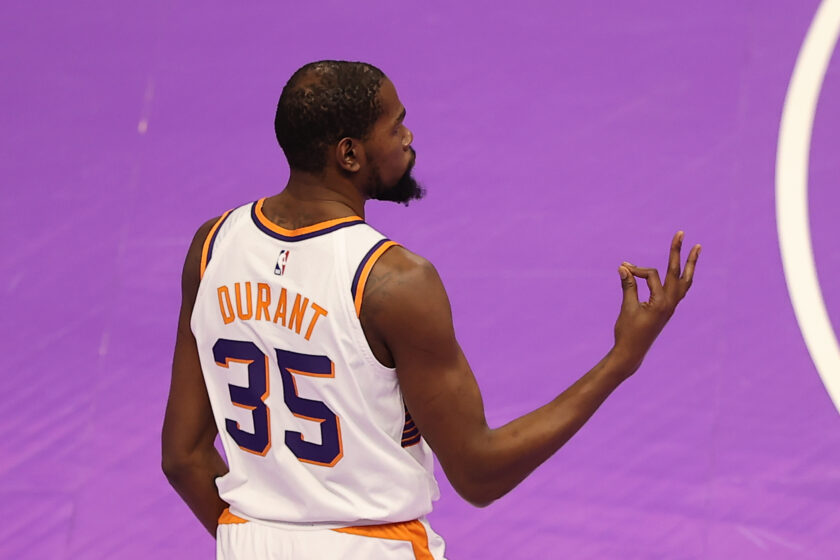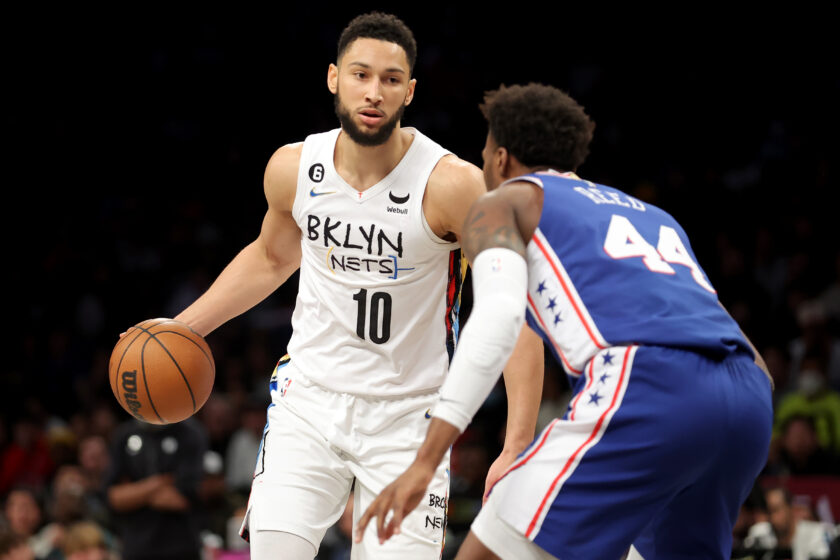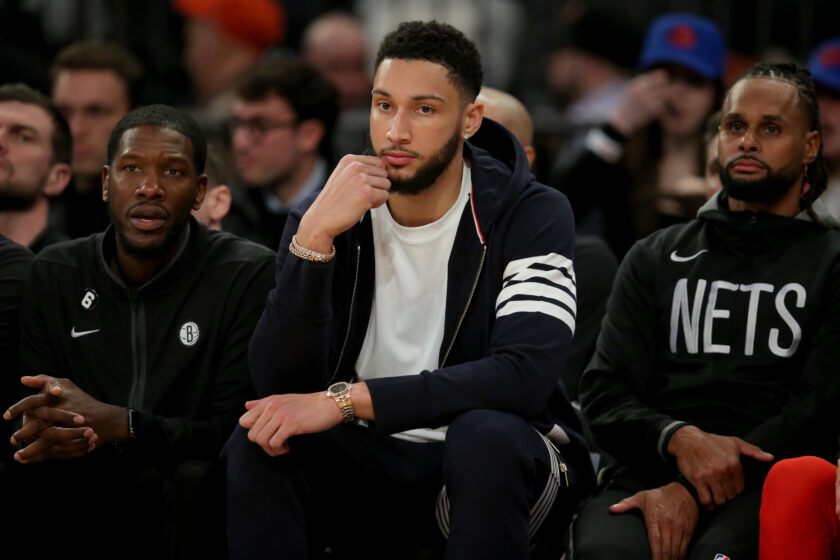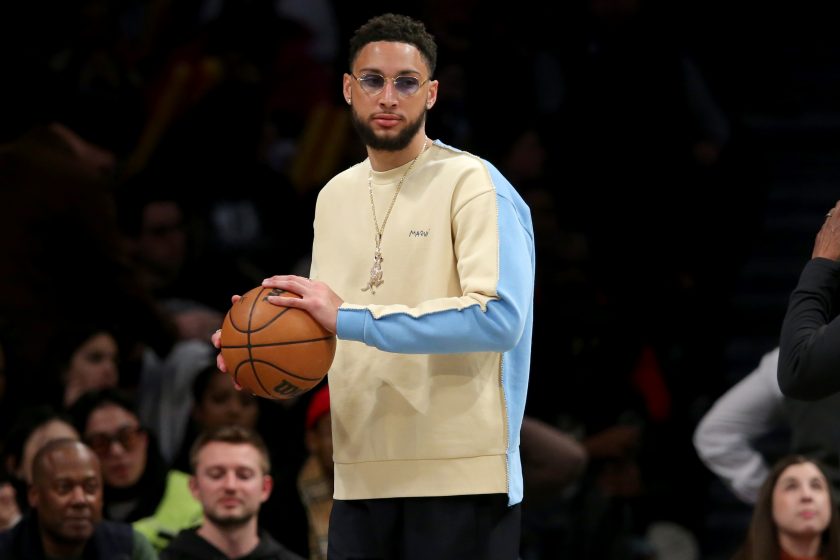Brooklyn Nets are D’Angelo Russell’s team without Caris LeVert (Film Room)
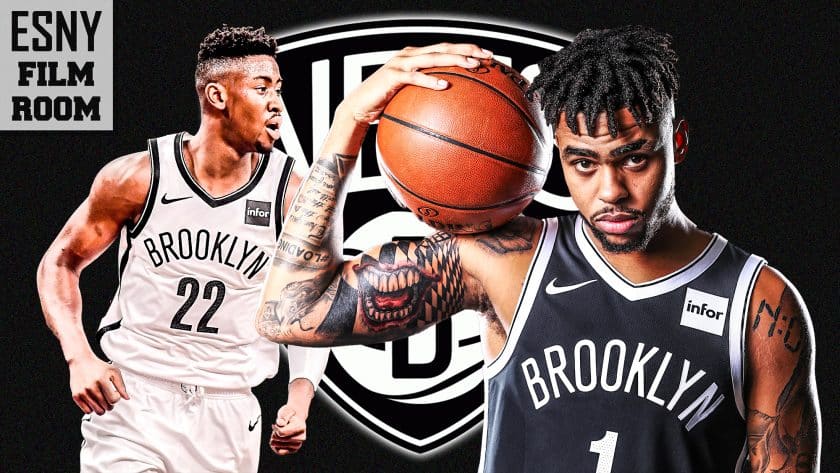
With rising star Caris LeVert on the mend, it appears that the Brooklyn Nets are passing the reigns of the team to their 22-year-old point guard, D’Angelo Russell. The question remains: is this the right choice?
Things were really looking up in Brooklyn.
On Monday, the young group of scrappy Brooklynites was headed into Minnesota to play the Timberwolves; a team that was coming off of one of the most dysfunctional starts to a season in recent memory. The Wolves suited up to play their first game since the Jimmy Butler trade and had started the season off with a disappointing 4-9 record. The Brooklyn Nets, on the other hand, were in high spirits after chalking up two huge wins against the Philidelphia 76ers and the Denver Nuggets.
With 12 seconds remaining in the second quarter and the shot clock winding down, the Nets newfound star, Caris LeVert, isolated against the Wolves Gorgui Dieng and threw up a prayer of a three-pointer.
The ball didn’t even graze the rim as it fell in the hands of Timberwolves rookie, Josh Okogie. Okogie grabbed the ball from the grips of three Nets players, pushed the ball up the floor, and exploded for a seemingly open layup.
LeVert, realizing that his shot had missed, turned around and sprinted to the other side of the court to get back on defense.
As Okogie rose for the layup, LeVert stretched out his 6’10” wingspan to attempt a buzzer-beating block with three seconds remaining on the clock.
Unfortunately, LeVert’s valiant effort to get back on defense would go unrewarded, as the Nets star player mistimed his jump resulting in a near-instantaneous foul call.
What happened next would alter the fate of the Brooklyn Nets season.
LeVert collided with Okogie, losing his balance in mid-air, and came crashing down to earth.
The Nets star landed squarely on the side of his ankle, causing his leg to bend in ways a leg should never be contorted.
Time held still at the Target Center as Nets and Timberwolves fans alike held their collective breath. The medical staff sprinted onto the court to carry LeVert off the floor on a stretcher. Nets fans watched with helpless eyes as their star’s season (and potentially his career) had quite possibly come to an end.
I think we all let a sigh of relief out when this came across our timelines.
There's real confidence within the Nets that LeVert will be able to return this season. https://t.co/Sjmi68KhPP
— Adrian Wojnarowski (@wojespn) November 13, 2018
Somehow, Caris LeVert could find a way back on the court this season, even after his foot rotated nearly 90 degrees away from his body. Talk about a miracle.
Even with the good news, the team will still be without their star for at least 50% of this six-month season. LeVert will be missed by the team for many reasons, as detailed in my piece from a couple of weeks ago. However, the biggest loss for the Nets will be the lack of Caris LeVert’s playmaking while running the pick-and-roll.
[sc name=”Nets Link Related” link=”https://elitesportsny.com/2018/10/29/brooklyn-nets-caris-levert-rightful-face-franchise/” text=”Nets Are Caris LeVert’s Team” ]The Nets as a team run the pick-and-roll more than two-thirds of the league, ranking 9th in frequency according to NBA.com.
Caris LeVert happens to be the main catalyst to this style of play, as 39.2% of his possessions occur in the pick-and-roll. LeVert ranks in the 93rd percentile of NBA players at pick-and-roll ballhandling, alongside one-on-one dynamos such as Kevin Durant, Kemba Walker, and Damian Lillard (and Rodney Hood … apparently).
LeVert’s ability to scramble and utilize his shiftiness will be dearly missed by the Nets. As we have seen, the Nets tend to shoot the ball late in the shot clock. Having a stop-gap creator like Caris LeVert on the floor gives the team more flexibility and more time when looking for open shooters.
With LeVert out of the picture, the team has been scrambling to find a new leader. Based on what we have seen from the past couple of games, it appears that this responsibility has been placed upon young D’Angelo Russell’s shoulders.
This shouldn’t necessarily come as a surprise. Even when LeVert was available, D’Angelo Russell, the fourth year point guard, was leading the team in usage according to NBA.com.
Interestingly, he also runs the pick-and-roll with almost as much frequency as LeVert. While LeVert runs pick-and-roll an average of 7.5 possessions per game, Russell is not far behind with 6.5 possessions per contest. The difference between the two is the efficiency at which they run this play. While LeVert is elite as a pick-and-roll ballhandler, D’Lo is downright decrepit at leading PNR offense. He ranks in the 29th percentile among NBA players and scores only 32.7% percent of the time (per NBA.com).
This isn’t the only metric where D’Angelo Russell is inefficient. Just by looking at his traditional statistics alone, you can see where he struggles.
D’Angelo Russell averages a measly 2.3 fouls per game, a mark that is well below what is expected for a point-guard who controls the ball as much as he does. Russell’s inability to draw contact and get to the line greatly limits him as a player and makes him a non-threat while driving.
To make matters worse, when he does find the seam in the defense and drives towards the hoop, Russell displays poor shooting touch around the rim. Take a look at the difference in at-rim finishing between LeVert and Russell.

In the first clip, Caris LeVert is able to crab dribble his way to the basket with the defender, Damian Jones, hanging onto him. LeVert uses fancy footwork and quick lateral movements to pirouette his way to the cup. What comes next is a nifty pump-fake which he sells with his entire body. The level of finesse and believability in his pump fake causes the defender to jump, fall, and foul LeVert in the act of shooting. And-one.
In the second clip, we see D’Angelo Russell take on Clint Capela of the Houston Rockets. Russell starts off the clip slowly, doing a series of crossovers that fail to get separation.
D’Angelo Russell isn’t much of an explosive player, and that’s one of the many reasons for why he struggles with scoring at the rim. While he is a solid ball-handler, he isn’t good at selling his fakes, as seen by the half-hearted pump-fakes against Capela. There’s something that is missing when he ball-fakes – maybe it’s the lack of head-movement, maybe it’s the strange shooting motion.
Regardless, Russell fails to gain any advantage a majority of the time, and in this particular play, is stuffed by the long-arms of Capela.
Another great example of D’Angelo Russell’s lack of at-rim shooting came against the Sixers while being defended by rookie Landry Shamet.

The first thing to notice is how, again, Russell fails to gain any distance from his defender while driving (due to his slow foot speed).
Noticing that the defender is close on his heels, Russell panics and throws up a prayer towards the hoop that barely grazes front rim.
This is another problem I have with Russell. If he is unable to shake his defender using his crossovers (which, again, happens quite a bit due to the lack of zip), Russell never has a backup plan. As a result, Russell second guesses himself a lot while countering his defender, which is why we see so many half-hearted pump fakes or shots with the wrong hand.
This play, in particular, stands out for a couple of reasons. First, he does not decelerate whatsoever to get the ball under control. Decelerating without notice is an excellent way to lose a defender while driving, and we’ve seen guys like James Harden make a living out this tactic.
[sc name=”Nets Center” ]Russell then pulls up from about four feet away from the cup while being closely contested, and unfortunately, he shoots the ball with both hands. Shooting with both hands should only occur when farther away from the hoop, as this gives more power. Russell should have, instead, attempted a one-handed teardrop shot, as made famous by the Warriors Stephen Curry or by Steve Nash.
The end result is a miss – bad one too. From the second Russell touched the ball, he was indecisive, and the result was ugly.
Eventually, Russell will learn to score even with his lack of foot speed. Guys like Kyle Anderson of the Memphis Grizzlies have learned to use their lack of speed as an advantage. (Slo-Mo Kyle Anderson is shooting 59.4% in the restricted area this year!)
In a couple of years, I expect Russell to be more under control and utilize his impressive stature of 6’5″. You’ll see more plays like this where Russell angles his body correctly and makes the right play:

For now, though, Russell is in the dreaded figuring it out stage of his career. This is to be expected. He’s 22-years-old, still learning the toughest position in basketball. Growing pains will happen.
The Nets still expect growth from D’Angelo, and this is the perfect stage for Russell to showcase what he’s capable of.
If the team doesn’t see the right amount of improvement, expect changes to come. There are other guys on this roster who deserve the spotlight as much as D’Angelo Russell.
Enter, Spencer Dinwiddie.
Comparing Dinwiddie to D’Angelo Russell is an interesting exercise. For starters, both players are free agents next summer and will be hunting for long-term deals. Dinwiddie vs. Russell has been a major point of discussion across Nets message boards. Recently, Coach Kenny Atkinson has been pulling D’Angelo Russell in fourth quarters in favor of Dinwiddie. The backlash has been immense; fans have been calling for Atkinson’s head.
This is understandable, given the pedigree of D’Angelo Russell. (drafted number two overall just three and a half years ago!). Plus, at this point in his career, Dinwiddie is what he is: a solid, 25-year-old point guard with little upside.
To the naked eye, Russell is the better player. He averages more points per game, more assists per game, and shoots a higher percentage from three.
Looking at a couple of important metrics, however, you’ll see why Atkinson has gone with Dinwiddie in the fourth.
The first is at-rim shooting.
| PLAYER | FGM (RA) | FGA (RA) | FG% (RA) |
|---|---|---|---|
| D'Angelo Russell | 27 | 68 | 39.7 |
| Spencer Dinwiddie | 34 | 49 | 69.4 |
D’Angelo Russell struggles greatly in the restricted area due to a lack of explosiveness and a limited amount of counters to the defense.
Dinwiddie, on the other hand, showcases much more poise in this area of the court and is shooting an elite 69.4% at the rim.
On top of being a subpar finisher around the rim, D’Angelo Russell also takes many of his shots from the most-dreaded area of the court; the midrange.
Thus far, Russell has taken 17.6% of his 226 total shots from the midrange. He’s shooting a below-average 40% from this area of the court. Dinwiddie, on the other hand, has taken the Houston Rockets approach to the mid-range by eliminating it altogether. Only 6% of Dinwiddie’s shots come from the mid-range.
Another interesting metric to look at is the performance of both of these players with LeVert off the floor. This is important to look at, given that LeVert is unavailable for the next three months (at least).
| PLAYER | FG% w/ LeVert | FG% w/o LeVert |
|---|---|---|
| D'Angelo Russell | 43.6 | 26.3 |
| Spencer Dinwiddie | 44.4 | 48.7 |
According to NBA.com’s Impact statistics, Spencer Dinwiddie has been able to maintain his efficiency in either scenario, shooting 44.4% with LeVert on the floor and 48.7% with him off it.
Russell, on the other hand, has seen his efficiency crater without LeVert. With Caris LeVert on the floor, Russell is shooting a solid 43.6% from the floor. Without him, that shooting percentage drops to a horrid 28.6%.
This is something to keep an eye on. There’s a case to be made for Dinwiddie being the guy for the next couple of months. But for now, the Nets should do right by their point guard of the future, D’Angelo Russell, and ride it out. He’s still a top-3 pick and stripping of him of his duties with a shorthanded roster could potentially hurt his confidence.
If things don’t go smoothly, and the results resemble Wednesday’s clinker against the Miami Heat, this might not be the worst thing.
I mean, hey, have you seen Duke’s trio of freshmen?

It’s time to embrace the tank. Stop tryin’, for Zion.
[sc name=”Nets Link Next” link=”https://elitesportsny.com/2018/11/16/brooklyn-nets-115-washington-wizards-104-stabilizing-win-for-bkn/” text=”Nets Knock Off Wizards In Big Win (HIGHLIGHTS)” ] [sc name=”Nets Footer”]An NBA fanatic who specializes in the advanced analytics of the game. I cover the Brooklyn Nets here in the city. Follow me on Twitter for semi-witty basketball tweets. @MattBrooksNBA

